
A simple lesson to introduce pupils to speed-time graphs using aspects of SDG9 relating to transport. Suitable for Y7 - Y9.Three levels of differentiation.
- Subject:
- Physics
- Material Type:
- Lesson Plan
- Author:
- Meryl Batchelder
- Date Added:
- 02/09/2019

A simple lesson to introduce pupils to speed-time graphs using aspects of SDG9 relating to transport. Suitable for Y7 - Y9.Three levels of differentiation.

This course considers how the visual and material world of “nature” has been reshaped by industrial practices, ideologies, and institutions, particularly in nineteenth- and twentieth-century America. Topics include land-use patterns; the changing shape of cities and farms; the redesign of water systems; the construction of roads, dams, bridges, irrigation systems; the creation of national parks; ideas about wilderness; and the role of nature in an industrial world. From small farms to suburbia, Walden Pond to Yosemite, we will ask how technological and natural forces have interacted, and whether there is a place for nature in a technological world.
Acknowledgement
This class is based on one originally designed and taught by Prof. Deborah Fitzgerald. Her Fall 2004 version can be viewed by following the link under Archived Courses on the right side of this page.

This course will consider the ways in which technology, broadly defined, has contributed to the building of American society from colonial times to the present. This course has three primary goals: to train students to ask critical questions of both technology and the broader American culture of which it is a part; to provide an historical perspective with which to frame and address such questions; and to encourage students to be neither blind critics of new technologies, nor blind advocates for technologies in general, but thoughtful and educated participants in the democratic process.

This course provides an introduction to the transportation industry’s major technical challenges and considerations. For upper level undergraduates interested in learning about the transportation field in a broad but quantitative manner. Topics include road vehicle engineering, internal combustion engines, batteries and motors, electric and hybrid powertrains, urban and high speed rail transportation, water vessels, aircraft types and aerodynamics, radar, navigation, GPS, GIS. Students will complete a project on a subject of their choosing.

Following their eventful and highly successful morning, the Wrights had an unhurried lunch and then walked the few miles to the town of Kitty Hawk to send a telegram to their father. With their machine wrecked by the wind and flying done for the season, the Wrights immediately thought of going home for Christmas. The only telegraph equipment in Kitty Hawk was a government wire at the weather bureau office connected to Norfolk, which passed the message on to Western Union. The telegraph operator at Kitty Hawk was John T. Dosher, with whom the Wrights had corresponded more than three years before. Two errors in transmission were made: Orville's name was misspelled and the time of their longest flight was incorrect (fifty-seven instead of fifty-nine seconds). The telegram reached Dayton, Ohio, at 5:25 P.M. and the brothers returned home with their broken machine on the evening of December 23.
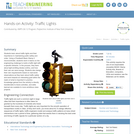
Students learn about traffic lights and their importance in maintaining public safety and order. Using a Parallax® Basic Stamp 2 microcontroller, students work in teams on the engineering challenge to build a traffic light with a specific behavior. In the process, they learn about light-emitting diodes (LEDs), and how their use can save energy. Students also design their own requirements based on real-world observations as they learn about traffic safety and work towards an interesting goal within the realm of what is important in practice. Knowledge gained from the activity is directly transferrable to future activities, and skills learned are scalable to more ambitious class projects.
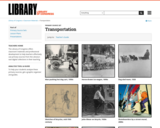
A selection of Library of Congress primary sources exploring transportation throughout U.S. history. This set also includes a Teachers Guide with historical context and teaching suggestions. Photographs, prints, manuscripts, maps, videos, and newspapers document the history of transportation in the United States.
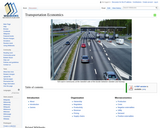
Transportation Economics is aimed at advanced undergraduate and graduate civil engineering, planning, business, and economics students, though the material may provide a useful review for practitioners. While incorporating theory, there is a very applied bent to the course, as all the ideas covered are intended to help inform the real decisions that are made (or should be made) in practice.

Design, operation, and management of traffic flows over complex transportation networks are the foci of this course. It covers two major topics: traffic flow modeling and traffic flow operations. Sub-topics include deterministic and probabilistic models, elements of queuing theory, and traffic assignment. Concepts are illustrated through various applications and case studies. This is a half-term subject offered during the second half of the semester.

Transportation Land Use Modeling and Policy provides a comprehensive introduction to land use and transportation models, offering a detailed exploration of integrated modeling approaches through case studies and real-world examples. It begins with an overview of current transportation planning issues and moves into several chapters dedicated to integrated land-use and transportation models, including Land Suitability, Lowry-type models, and more recent approaches such as MEPLAN and PECAS. The book also examines traditional travel demand modeling (TDM), giving readers a solid foundation in the subject.

The main objective of this course is to give broad insight into the different facets of transportation systems, while providing a solid introduction to transportation demand and cost analyses. As part of the core in the Master of Science in Transportation program, the course will not focus on a specific transportation mode but will use the various modes to apply the theoretical and analytical concepts presented in the lectures and readings.
Introduces transportation systems analysis, stressing demand and economic aspects. Covers the key principles governing transportation planning, investment, operations and maintenance. Introduces the microeconomic concepts central to transportation systems. Topics covered include economic theories of the firm, the consumer, and the market, demand models, discrete choice analysis, cost models and production functions, and pricing theory. Application to transportation systems include congestion pricing, technological change, resource allocation, market structure and regulation, revenue forecasting, public and private transportation finance, and project evaluation; covering urban passenger transportation, freight, aviation and intelligent transportation systems.

Mumbai Transportation System need to be revised and make more commuter friendly.

In this lab, students will discuss and make a travel itinerary with their partner. They will choose the destination, length of stay, mode of transportation, and budgets. After creating the plan, students will present and explain their decisions to other classmates.
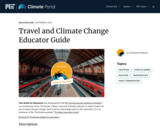
This Guide for Educators was developed by the MIT Environmental Solutions Initiative as an extension of our TILclimate (Today I Learned: Climate) podcast, to make it easier for you to teach climate change, earth science, and energy topics in the classroom. It is an extension of the TILclimate episode "TIL about everyday travel."
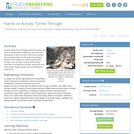
Students apply their knowledge about mountains and rocks to transportation engineering, with the task of developing a model mountain tunnel that simulates the principles behind real-life engineering design. Student teams design and create model tunnels through a clay mountain, working within design constraints and testing for success; the tunnels must meet specific design requirements and withstand a certain load.

Access to personal mobility has played a crucial role in people's life satisfaction, with personal vehicles revolutionizing daily life since the early 1900s. The number of global car registrations has dramatically increased over the years, reaching 1.1 billion in 2019. The energy historian Roger Fouquet explored the impact of personal transportation services in the United Kingdom from the 14th to the 20th century, revealing the economic, social, and environmental changes brought about by the expansion of personal travel.
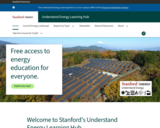
Stanford University’s Understand Energy Learning Hub provides free access to Stanford course content on energy resources from fossil fuels like oil and coal to renewable resources like the wind, the sun, and efficiency; energy currencies like electricity and hydrogen; and energy services such as transportation and buildings. Explore the Hub and build your energy literacy to address climate change and sustainability issues, engage on equity and human development challenges, participate in energy industry markets and technology innovations, and make informed energy decisions.
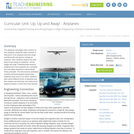
The airplanes unit begins with a lesson on how airplanes create lift, which involves a discussion of air pressure and how wings use Bernoulli's principle to change air pressure. Next, students explore the other three forces acting on airplanes thrust, weight and drag. Following these lessons, students learn how airplanes are controlled and use paper airplanes to demonstrate these principles. The final lessons addresses societal and technological impacts that airplanes have had on our world. Students learn about different kinds of airplanes and then design and build their own balsa wood airplanes based on what they have learned.

This course is aimed at the aspiring planning practitioner, policy-maker, or industry decision-maker with an interest in urban transportation and environmental issues in Latin America. The course will focus on current transport-related themes confronting many cities in the region, including: rapid motorization and suburbanization and subsequent impacts on transportation infrastructure and quality of life; public sector management and improvement of privately-owned and operated transit systems; and, transportation air pollution problems and potential solutions.
The course will be geared towards interactive problem-solving, taking advantage of students’ skills and experiences in: institutional analysis, policy analysis, and project and program evaluation and implementation. Detailed knowledge of transportation planning is not required; instead, the course will attempt to place the general practitioner into a specific transportation public policy situation and draw from her skills to devise real solutions. To fulfill this problem-solving orientation, the course will be divided into two parts. Part I of the course will consist of a series of lectures on the principal issues surrounding transportation in the developing world (including motorization, fiscal pressures, urban sprawl), concepts of sustainability as they relate to urban transportation, regional strategic planning approaches, and transportation policy and technology options and examples of successful implementation.
After these lectures, Part II of the course will be dedicated to the two case studies, where students will apply the knowledge gained in Part I to develop strategic solutions to the transport-land use-environment challenges in two different cities.
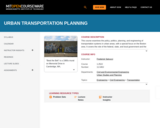
This course examines the policy, politics, planning, and engineering of transportation systems in urban areas, with a special focus on the Boston area. It covers the role of the federal, state, and local government and the MPO, public transit in the era of the automobile, analysis of current trends and pattern breaks; analytical tools for transportation planning, traffic engineering, and policy analysis; the contribution of transportation to air pollution, social costs, and climate change; land use and transportation interactions, and more. Transportation sustainability is a central theme throughout the course, as well as consideration of if and how it is possible to resolve the tension between the three E’s (environment, economy, and equity). The goal of this course is to elicit discussion, stimulate independent thinking, and encourage students to understand and challenge the “conventional wisdom” of transportation planning.